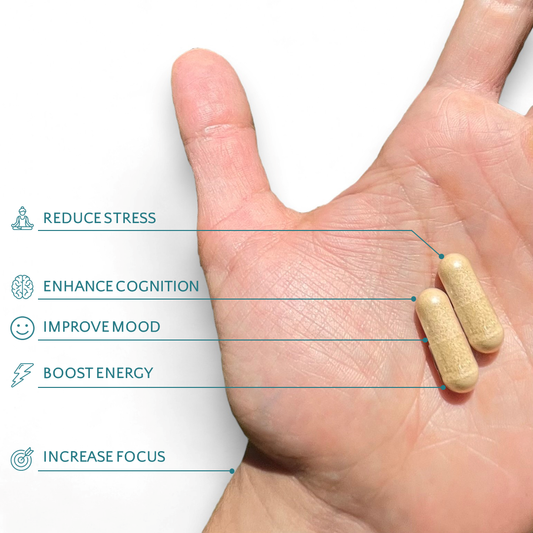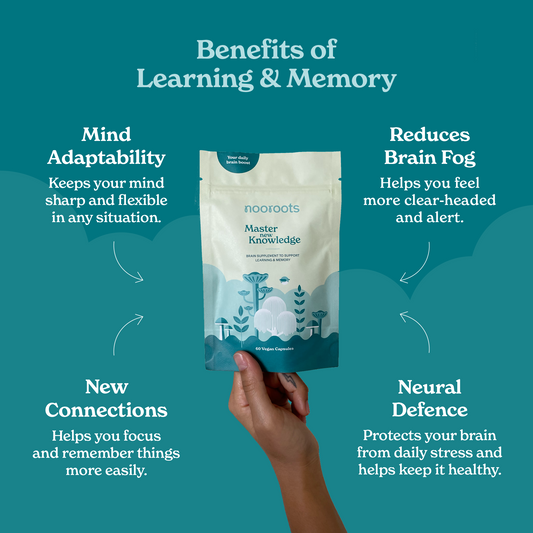Vitamin B3, also known as niacin, is an essential water-soluble vitamin that plays a crucial role in energy production, cellular metabolism, and brain health.
Discovered in the early 20th century, Vitamin B3 gained significant attention with the identification of its deficiency disease, pellagra, characterized by dermatitis, diarrhea, dementia, and, if untreated, death. This condition was prevalent in populations with diets heavily reliant on corn, which lacks bioavailable niacin.
The enrichment of grains and the introduction of niacin supplements drastically reduced the incidence of pellagra by the mid-20th century.
Beyond its historical significance in treating pellagra, Vitamin B3 is now recognized for its multifaceted health benefits, including cognitive enhancement, cardiovascular health, skin health, and metabolic support.
This guide explores the various aspects of Vitamin B3, highlighting its importance and applications in modern health and wellness.
Contents
- What is Vitamin B3?
- Vitamin B3 as a Nootropic
- Scientific Evidence on Vitamin B3's Benefits
- Health Benefits Beyond Cognition
- How to Use Vitamin B3
- Safety and Side Effects
A Beginner’s Guide to Vitamin B3 (Niacin) as a Natural Nootropic

What is Vitamin B3?
Definition and Background
Vitamin B3, also known as niacin, encompasses two vitamers: nicotinic acid and nicotinamide (niacinamide). These compounds are precursors to the coenzymes nicotinamide adenine dinucleotide (NAD) and its phosphate variant, nicotinamide adenine dinucleotide phosphate (NADP). These coenzymes are essential for numerous redox reactions crucial for cellular energy production and metabolic processes .
Chemical Composition of Vitamin B3
Vitamin B3 exists in two primary forms, each with distinct chemical structures and roles:
- Nicotinic Acid (Pyridine-3-carboxylic Acid): This form is primarily involved in converting carbohydrates into glucose, metabolizing fats and proteins, and maintaining proper function of the nervous system.
- Nicotinamide (Nicotinic Acid Amide): Nicotinamide is pivotal in forming NAD and NADP, which are vital for energy transfer reactions within cells. NAD+ and NADP+ act as electron carriers in various metabolic pathways, including glycolysis and the citric acid cycle, and are involved in DNA repair and cell signaling .
Historical Context and Traditional Uses
The discovery and understanding of Vitamin B3's significance began in the early 20th century with the identification of its deficiency disease, pellagra. Pellagra, characterized by dermatitis, diarrhea, dementia, and, if untreated, death, was rampant in populations with corn-based diets, as corn lacks bioavailable niacin .
Historically, niacin was recognized for its ability to treat pellagra effectively. The condition was prevalent in the southern United States and parts of Europe, where diets were heavily reliant on maize. Enrichment of grains and the introduction of niacin supplements drastically reduced the incidence of pellagra by the mid-20th century .
Traditional uses of niacin extended beyond treating pellagra. It was employed for its vasodilatory properties to manage hyperlipidemia and cardiovascular diseases. High doses of nicotinic acid have been shown to reduce serum cholesterol levels and triglycerides, highlighting its therapeutic potential in cardiovascular health .
Vitamin B3 as a Nootropic
Understanding Nootropics
Nootropics, often referred to as "smart drugs" or cognitive enhancers, are substances that can improve cognitive function, particularly executive functions, memory, creativity, or motivation, in healthy individuals. The term was coined in 1972 by Dr. Corneliu E. Giurgea, a Romanian psychologist and chemist, to describe a new class of molecules that specifically target the brain to enhance learning and memory while being extremely safe and neuroprotective.
Cognitive Enhancement and Neuroprotection
Vitamin B3, encompassing niacin and niacinamide, plays a crucial role in neuroprotection and cognitive enhancement. As precursors to nicotinamide adenine dinucleotide (NAD+), these compounds are integral to cellular energy production, DNA repair, and the regulation of cell death. NAD+ levels naturally decline with age, contributing to cognitive decline and neurodegenerative diseases.
Supplementation with Vitamin B3 can help maintain adequate NAD+ levels, thereby supporting brain health and cognitive function.
Research has shown that niacinamide has neuroprotective effects in various models of neurodegeneration. For instance, in models of Alzheimer’s disease, niacinamide has been observed to reduce tau pathology, a hallmark of the disease, and improve cognitive deficits.
Additionally, it enhances the function of mitochondria, the energy powerhouses of cells, which is crucial for maintaining cognitive function and preventing neurodegeneration.
Improving Memory and Learning
Vitamin B3’s role in enhancing memory and learning is primarily linked to its function in energy metabolism and neurotransmitter synthesis. NAD+ is vital for the production of ATP, the main energy currency of cells, which is necessary for all cellular functions, including those of neurons.
Adequate energy supply is crucial for synaptic plasticity, the ability of synapses to strengthen or weaken over time, which is essential for learning and memory formation.
Studies on animal models have shown that supplementation with niacinamide can lead to improvements in various aspects of memory and learning.
For instance, niacinamide supplementation has been found to enhance spatial memory and recognition memory in mice, likely due to its effects on neuronal energy metabolism and synaptic function.
Reducing Mental Fatigue
Mental fatigue, characterized by a decline in cognitive performance and the ability to sustain attention, can significantly impair daily functioning. Vitamin B3 plays a role in reducing mental fatigue through its involvement in cellular energy production and the maintenance of neuronal health.
By supporting mitochondrial function and ensuring an adequate supply of ATP, niacinamide helps sustain cognitive performance even under conditions of mental stress and prolonged cognitive activity.
Clinical studies have demonstrated that niacinamide can alleviate symptoms of mental fatigue.
For example, a study on the effects of B vitamins, including niacinamide, found that supplementation led to a significant reduction in self-reported fatigue and improved cognitive performance in tasks requiring sustained attention.
Scientific Evidence on Vitamin B3's Benefits
Anti-inflammatory and Antioxidative Properties
Vitamin B3 also exhibits significant anti-inflammatory and antioxidative properties, which contribute to its neuroprotective effects. Nicotinamide can inhibit the activity of poly(ADP-ribose) polymerase-1 (PARP-1), an enzyme involved in the inflammatory response and oxidative stress.
By reducing PARP-1 activity, nicotinamide helps to preserve NAD+ levels, thereby enhancing cellular resistance to stress and damage.
Research has demonstrated that nicotinamide reduces levels of pro-inflammatory cytokines such as TNF-α and IL-1β, and decreases markers of oxidative stress in the brain. In a study on oxidative stress in the retina, Vitamin B3 administration significantly increased superoxide dismutase (SOD) activity, an important antioxidant enzyme, and reduced lipid peroxidation, indicating decreased oxidative damage .
These anti-inflammatory and antioxidative effects are crucial in protecting the brain from chronic inflammation and oxidative stress, which are common features of many neurodegenerative diseases.
Benefits for Traumatic Brain Injury and Recovery
Vitamin B3 has shown promising results in the treatment and recovery from traumatic brain injury (TBI). In experimental models, nicotinamide administration following TBI significantly improved functional recovery, reduced lesion size, and decreased the expression of glial fibrillary acidic protein (GFAP), a marker of astrocyte activation and inflammation.
For instance, in a study involving rats with controlled cortical impact (CCI) injuries, those treated with nicotinamide exhibited substantial improvements in both motor and cognitive functions compared to untreated rats. The treatment not only reduced the size of brain lesions but also prevented working memory deficits and enhanced the acquisition of reference memory tasks.
Additionally, continuous administration of nicotinamide has been shown to improve behavioral recovery and reduce cortical injury, highlighting its potential as a therapeutic agent for TBI.
Health Benefits Beyond Cognition
Cardiovascular Health
Vitamin B3, particularly in its form as niacin, has been widely recognized for its beneficial effects on cardiovascular health. Niacin is known to improve lipid profiles by reducing levels of low-density lipoprotein (LDL) cholesterol and triglycerides while increasing high-density lipoprotein (HDL) cholesterol.
This lipid-modulating effect helps in the prevention and management of atherosclerosis, a major risk factor for cardiovascular diseases.
Clinical studies have shown that niacin can significantly reduce the incidence of heart attacks and strokes in high-risk patients. For example, a study published in the New England Journal of Medicine reported that niacin therapy reduced the risk of cardiovascular events by approximately 25% in patients with low HDL cholesterol levels receiving intensive statin therapy .
Additionally, niacin’s anti-inflammatory and antioxidative properties further contribute to its cardiovascular benefits by protecting blood vessels from oxidative damage and inflammation .
Skin Health and Anti-Aging Effects
Niacinamide, another form of Vitamin B3, is extensively used in dermatology for its skin health and anti-aging benefits. Topical application of niacinamide has been shown to improve the appearance of aging facial skin, reducing hyperpigmented spots, red blotchiness, and wrinkles. It also enhances skin elasticity and reduces yellowing (sallowness) of the skin.
A clinical study involving 50 female subjects with signs of facial photoaging found that applying 5% niacinamide significantly improved skin appearance over 12 weeks. The study reported reductions in fine lines and wrinkles, hyperpigmented spots, red blotchiness, and skin sallowness, along with improved skin elasticity.
These effects are attributed to niacinamide's ability to enhance the skin barrier function, reduce water loss, and improve microcirculation within the dermis.
Metabolic and Energy Benefits
Vitamin B3 plays a critical role in cellular energy production, which is essential for overall metabolic health. As a precursor to NAD and NADP, niacin is integral to the metabolic processes that convert carbohydrates, fats, and proteins into usable energy.
These coenzymes are crucial for the glycolysis pathway, the citric acid cycle, and oxidative phosphorylation in the mitochondria, all of which are essential for ATP production .
Adequate levels of NAD+ are necessary for maintaining energy balance and supporting high metabolic rates in active tissues like muscles and the brain. During periods of intense mental or physical activity, niacin helps to sustain energy levels and reduce fatigue by ensuring efficient energy production and utilization . This makes niacin a valuable nutrient for athletes and individuals with high cognitive demands.

How to Use Vitamin B3
Different Forms of Vitamin B3 Consumption
Vitamin B3, also known as niacin, comes in several forms, each with distinct characteristics and health benefits. The primary forms of Vitamin B3 are:
- Nicotinic Acid: Commonly found in supplements and fortified foods, nicotinic acid is effective in lowering cholesterol levels and improving cardiovascular health.
- Nicotinamide (Niacinamide): This form is widely used in dermatology for its skin benefits and is also crucial for cellular energy production as a precursor to NAD+.
- Inositol Hexanicotinate: Often marketed as a "no-flush" niacin, this form is used in supplements designed to avoid the common side effect of skin flushing associated with high doses of nicotinic acid.
These forms can be consumed through various dietary sources including meats, fish, legumes, nuts, grains, and fortified cereals .
Recommended Dosages for Health Benefits
The recommended daily intake of Vitamin B3 varies based on age, sex, and health conditions. For adults, the recommended dietary allowance (RDA) is approximately 15-20 mg per day to prevent deficiency diseases such as pellagra . However, therapeutic doses for specific health benefits may be higher:
- Cholesterol Management: Doses of up to 2,000 mg of nicotinic acid per day have been used to manage cholesterol levels, though such high doses should be monitored by a healthcare provider due to potential side effects.
- Skin Health: Topical applications of niacinamide in concentrations ranging from 2% to 5% are common in skincare products to reduce hyperpigmentation and improve skin elasticity .
- Cognitive and Neuroprotective Effects: For neuroprotective benefits and cognitive enhancement, doses of 500-1,000 mg per day of nicotinamide have been studied and found to be beneficial .
Timing and Combining with Other Supplements
The effectiveness of Vitamin B3 can be influenced by timing and combination with other supplements:
- Timing: To reduce the risk of gastrointestinal discomfort, it's recommended to take niacin with meals. If using high doses of nicotinic acid, dividing the dose throughout the day can help mitigate flushing.
- Combination with Other Supplements: Combining Vitamin B3 with other B vitamins can enhance its overall effectiveness in energy metabolism and cognitive function. For instance, B-complex supplements often include niacin along with vitamins B1, B2, B6, and B12 to support comprehensive metabolic processes .
Additionally, combining niacin with omega-3 fatty acids has been shown to improve lipid profiles more effectively than either supplement alone. Antioxidants such as vitamin C and E can also complement the antioxidative effects of niacin, providing broader health benefits .
Safety and Side Effects
General Safety of Vitamin B3
Vitamin B3, including its forms niacin (nicotinic acid) and niacinamide (nicotinamide), is generally considered safe for most people when consumed at recommended levels.
Niacin is essential for converting food into energy, maintaining healthy skin and nerves, and improving cholesterol levels . Niacinamide, another form of Vitamin B3, is often used for its anti-inflammatory properties and skin benefits .
Potential Side Effects and Precautions
While Vitamin B3 is safe at recommended doses, higher doses can lead to several side effects. Nicotinic acid can cause flushing, a common side effect characterized by redness, warmth, itching, or tingling of the skin. This reaction is generally harmless but can be uncomfortable.
To minimize flushing, it is often recommended to start with lower doses and gradually increase them, or to use the extended-release form of niacin .
Other potential side effects of high doses of niacin include:
- Gastrointestinal issues: Nausea, vomiting, and diarrhea.
- Hepatotoxicity: High doses, particularly of sustained-release niacin, can lead to liver damage. The risk increases with doses above 2 grams per day .
- Hyperglycemia: High doses can also affect blood sugar levels, which is a concern for people with diabetes.
- Gout: Niacin can raise uric acid levels, potentially triggering gout attacks .
Nicotinamide generally does not cause flushing and is better tolerated at higher doses. However, extremely high doses (above 3 grams per day) have been associated with nausea, liver toxicity, and other adverse effects .
Interactions with Medications and Specific Health Conditions
Vitamin B3 can interact with certain medications and health conditions:
- Blood pressure medications: Niacin can enhance the effect of antihypertensive medications, leading to excessively low blood pressure.
- Cholesterol-lowering drugs: When combined with statins, niacin can increase the risk of muscle damage (myopathy).
- Diabetes medications: Niacin can interfere with blood glucose control, requiring adjustments in diabetes medication.
- Anticoagulants: High doses of niacin can affect blood clotting, potentially interacting with anticoagulant medications .
It is important for individuals with liver disease, kidney disease, stomach ulcers, or active bleeding to consult with a healthcare provider before starting niacin supplements.
Importance of Moderation and Consulting with a Healthcare Professional
Moderation and professional guidance are key to safely using Vitamin B3. Starting with lower doses and gradually increasing them can help minimize side effects. Extended-release formulations of niacin may also reduce the incidence of flushing and gastrointestinal discomfort.
Consulting with a healthcare professional is crucial, especially for individuals with preexisting health conditions or those taking other medications.

Conclusion
Vitamin B3, encompassing niacin and niacinamide, is a versatile and essential nutrient with profound benefits extending across cognitive enhancement, cardiovascular health, skin health, and metabolic function. As a nootropic, it supports cognitive function, memory, and learning, while providing neuroprotection against age-related decline and neurodegenerative diseases. Scientifically backed evidence highlights its anti-inflammatory and antioxidative properties, further solidifying its role in maintaining brain health and aiding recovery from traumatic brain injury.
Beyond cognition, Vitamin B3's benefits in cardiovascular health are well-documented, with its ability to improve lipid profiles and reduce cardiovascular risks. In dermatology, niacinamide is valued for its anti-aging effects, improving skin elasticity, and reducing hyperpigmentation and wrinkles. Its critical role in energy metabolism supports overall metabolic health, making it beneficial for both physical and mental energy.
To maximize the health benefits of Vitamin B3, understanding its various forms, recommended dosages, and proper usage is crucial. While generally safe, it is important to be mindful of potential side effects and interactions with medications. Consulting with a healthcare professional ensures safe and effective supplementation, tailored to individual health needs and conditions.
Incorporating Vitamin B3 into your wellness regimen can significantly enhance your health and cognitive performance, making it a valuable addition to your daily routine.
Frequently Asked Questions
What is Vitamin B3 (Niacin)?
Vitamin B3, also known as Niacin, is a water-soluble vitamin essential for energy production, cellular metabolism, and overall brain health. It includes two vitamers: nicotinic acid and niacinamide (nicotinamide).
How does Vitamin B3 work as a nootropic?
Vitamin B3 supports cognitive function by aiding in the production of energy within brain cells through the synthesis of NAD+ and NADP+, which are crucial for metabolic processes. It also acts as an antioxidant, protecting against oxidative stress and neuroinflammation.
Can Vitamin B3 improve memory?
Yes, Vitamin B3 can improve memory and cognitive performance by ensuring efficient energy metabolism, enhancing mitochondrial function, and reducing oxidative damage in the brain. Studies have shown its effectiveness in improving various aspects of memory and learning.
Is Vitamin B3 safe for daily use?
Vitamin B3 is generally safe for daily use when taken at recommended doses. Excess amounts of niacin are excreted in urine. However, high doses should be taken under medical supervision due to potential side effects such as flushing and hepatotoxicity.
What are the benefits of Vitamin B3 for the brain?
Vitamin B3 enhances brain health by improving cognitive function, supporting energy production, protecting against oxidative stress, reducing neuroinflammation, and aiding in the recovery from traumatic brain injury.
How much Vitamin B3 should I take for cognitive benefits?
The recommended daily allowance (RDA) for adults is about 15-20 mg. For cognitive benefits and neuroprotection, higher doses ranging from 500-1,000 mg of nicotinamide are often studied, but these should be taken under medical supervision.
Are there any side effects of taking Vitamin B3?
Vitamin B3 is well-tolerated at recommended doses. High doses of nicotinic acid can cause flushing, nausea, vomiting, diarrhea, hepatotoxicity, hyperglycemia, and gout. Niacinamide is better tolerated but can cause liver toxicity at extremely high doses (above 3 grams per day).
Can Vitamin B3 help with anxiety and depression?
Vitamin B3 can support overall brain health and may help alleviate symptoms of anxiety and depression by enhancing energy production and reducing oxidative stress. However, it is not a primary treatment for these conditions.
What is the best way to take Vitamin B3 for nootropic effects?
Vitamin B3 can be taken in supplement form, often as part of a B-complex vitamin. Nicotinamide is preferred for nootropic effects due to its better tolerance and lack of flushing. It should be taken with food to enhance absorption.
How long does it take to see the effects of Vitamin B3 on cognitive function?
The cognitive benefits of Vitamin B3 can typically be noticed within a few weeks of consistent use, depending on individual health status and dosage.
Learn more about the vitamins, minerals and plant extracts we use to give your brain a daily boost
- Cacao
- Ginkgo Biloba
- Ashwagandha
- N-Acetyl L-Tyrosine
- Holy Basil
- L-Theanine
- Rhodiola Rosea
- Guarana Seed
- Piperine
References
- Bissett, D. L., Oblong, J. E., & Berge, C. A. (2005). Niacinamide: A B Vitamin that Improves Aging Facial Skin Appearance. Dermatologic Surgery, 31(s1), 860–866. https://doi.org/10.1111/j.1524-4725.2005.31732
- Chen, T., Wu, P., Wen, Y., Desai, T. D., Huang, C., Liu, P., & Tsai, R. (2022). Vitamin B3 provides neuroprotection via antioxidative stress in a rat model of anterior ischemic optic neuropathy. Antioxidants, 11(12), 2422. https://doi.org/10.3390/antiox11122422
- D’Andrea, E., Hey, S. P., Ramirez, C. L., & Kesselheim, A. S. (2019). Assessment of the role of niacin in managing cardiovascular disease outcomes. JAMA Network Open, 2(4), e192224. https://doi.org/10.1001/jamanetworkopen.2019.2224
- Ganji, S. H., Kamanna, V. S., & Kashyap, M. L. (2003). Niacin and cholesterol: role in cardiovascular disease (review). the Journal of Nutritional Biochemistry, 14(6), 298–305. https://doi.org/10.1016/s0955-2863(02)00284-x
- Gasperi, V., Sibilano, M., Savini, I., & Catani, M. (2019). Niacin in the central nervous system: an update of biological aspects and clinical applications. International Journal of Molecular Sciences, 20(4), 974. https://doi.org/10.3390/ijms20040974
- Hoane, M. R., Akstulewicz, S. L., & Toppen, J. (2003). Treatment with Vitamin B3 Improves Functional Recovery and Reduces GFAP Expression following Traumatic Brain Injury in Rats. Journal of Neurotrauma, 20(11), 1189–1199. https://doi.org/10.1089/089771503770802871
- Kennedy, D. (2016). B Vitamins and the Brain: Mechanisms, Dose and Efficacy—A Review. Nutrients, 8(2), 68. https://doi.org/10.3390/nu8020068
- Lappas, M., & Permezel, M. (2011). The anti-inflammatory and antioxidative effects of nicotinamide, a vitamin B3 derivative, are elicited by FoxO3 in human gestational tissues: implications for preterm birth. the Journal of Nutritional Biochemistry, 22(12), 1195–1201. https://doi.org/10.1016/j.jnutbio.2010.10.009
- Morris, M. C. (2004). Dietary niacin and the risk of incident Alzheimer’s disease and of cognitive decline. Journal of Neurology, Neurosurgery and Psychiatry, 75(8), 1093–1099. https://doi.org/10.1136/jnnp.2003.025858
- Nguyen, H. D., & Kim, M. (2022). The role of mixed B vitamin intakes on cognitive performance: Modeling, genes and miRNAs involved. Journal of Psychiatric Research, 152, 38–56. https://doi.org/10.1016/j.jpsychires.2022.06.006
- Rennie, G., Chen, A. C., Dhillon, H., Vardy, J., & Damian, D. L. (2014). Nicotinamide and neurocognitive function. Nutritional Neuroscience, 18(5), 193–200. https://doi.org/10.1179/1476830514y.0000000112
- Rutjes, A. W., Denton, D. A., Di Nisio, M., Chong, L., Abraham, R. P., Al-Assaf, A. S., Anderson, J. L., Malik, M. A., Vernooij, R. W., Martínez, G., Tabet, N., & McCleery, J. (2018). Vitamin and mineral supplementation for maintaining cognitive function in cognitively healthy people in mid and late life. Cochrane Library, 2019(1). https://doi.org/10.1002/14651858.cd011906.pub2
- Shen, X., Yang, L., Liu, Y. Y., Jiang, L., & Huang, J. F. (2023). Association between dietary niacin intake and cognitive function in the elderly: Evidence from NHANES 2011–2014. Food Science & Nutrition, 11(8), 4651–4664. https://doi.org/10.1002/fsn3.3428
- Tardy, A., Pouteau, E., Marquez, D., Yilmaz, C., & Scholey, A. (2020). Vitamins and Minerals for energy, fatigue and Cognition: A Narrative review of the biochemical and Clinical evidence. Nutrients, 12(1), 228. https://doi.org/10.3390/nu12010228





